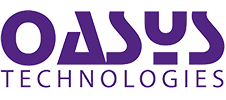The New Wave! Plastic Recycling in the Banking Industry

Plastic Recycling in the Banking Industry
Taking back some of the plastic that litters our planet and re-using it for Banking Cards is a small but positive step in addressing increasing environmental concerns.
Processing and manufacturing cards using reclaimed materials is not without it’s challenges. The characteristics of these materials are different, with more variability than ‘virgin’ polymers such as PVC and PC. This has led to an element of blending or compositing – mixing reclaimed and virgin materials to get an acceptable result or sandwiching the reclaimed material between thin layers of fresh polymer.
This is akin the common claim of “80% recyclable” or “largely recyclable” – not perfect, but a step in the right direction.
The aim is to create a product with the familiar Credit Card look and feel, but with as much reclaimed material inside that the manufacturing process can manage, while also bearing in mind, Credit cards are normally required to have at least a three-year life, so the quality standards and durability must be maintained.
One of the key areas affected is the cutting of the cards – the Credit Card shape and feel is distinctive – pick up a card that’s stiffer (polycarbonate) or heavier (metal) and you will immediately notice the difference. The same applies to the edges – the “classic” PVC Credit Card has a smooth cut feel and edges are that rough or uneven, even slightly, stand out. Banks who consider the Card as one of the key connections to clients do not want an inferior impression.
Reclaimed materials are fundamentally harder to cut than say Virgin PVC – they need different tooling and cutting parameters to maintain a finish that is close to customer expectation.
However, the reward for taking back and reprocessing some of these dumped plastics (on their way to the Oceans in many cases), is that response amongst cards users is very positive. Most people view a card from recycled plastic as positive, wishing to associate with the intent behind the initiative and in many cases willing to pay for that.
So next time you use a card it may just contain a little plastic that avoided being an extra on one of David Attenborough’s documentaries…
In providing some of the key technology behind the manufacture of plastic cards Oasys have been working to adapt and develop its machines to suit the ‘New Wave’ of upcycled cards and now provides specific versions of Assembly, Lamination and Cutting systems for recycled and reclaimed plastics – for further details contact Guy or Elliot on sales@oasys.uk.com.

